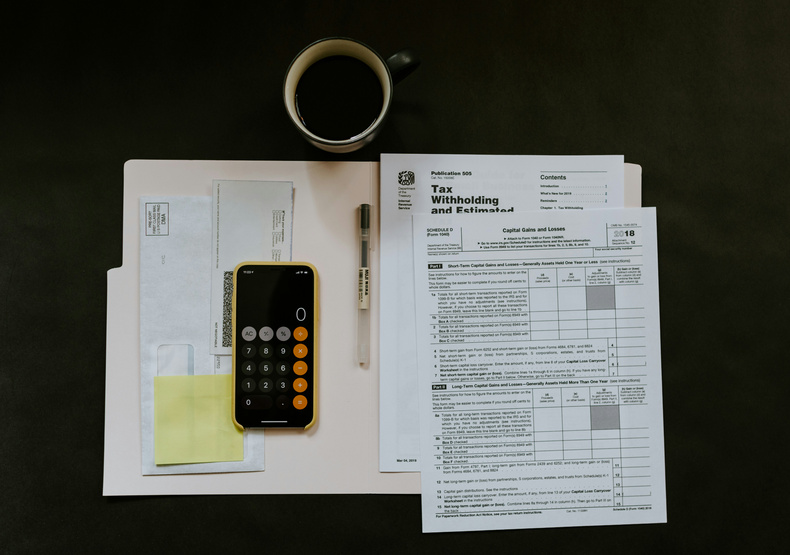Filing a self-assessment tax return: Everything you need to know

Written by Ahmad Tirmizey from Reflex Accounting Limited
The UK’s tax system is complicated. We prepare self-assessment tax returns at Reflex Accounting accountants and make sure that they are accurate, comply with the rules, and are submitted on time.
Whether you’re self-employed, a landlord, or you have several income streams, we make things slick and simple, helping you avoid penalties and optimise your tax position. Reach out to us for a consultation with the experts.
When it comes to taxes, the term "self-assessment" often sends shivers down people's spines.
In layman’s terms, it’s a system by which HMRC (Her Majesty’s Revenue and Customs) in the UK collects Income Tax from individuals and businesses.
The deadline for the 2023/24 tax year is approaching. If you plan to file your tax return online, it must be submitted by midnight on January 31, 2025.
If you are a sole trader, a director of a limited company managing your own business, or a partner in a partnership, you are required to submit a Self-Assessment tax return to HMRC by January 31 each year.
What is a self-assessment tax return?
When you are earning money that is not financially taxed at source, for example through PAYE, a Simple Assessment tax return is a document in which HMRC calculates how much income tax you ought to be paying. It’s usually needed by self-employed people, directors of companies, or those who have sources of income on which they’ve not paid tax.
In basic terms, this form tells HMRC about all your income sources, so they can calculate what you owe in tax for the financial year.
Who needs to file a self-assessment tax return?
Filing a Self-Assessment tax return is not a requirement for everyone. You have to file one if you meet any of these conditions:
- Sole traders earning more than £1,000 a year (gross).
- Business partnership associates.
- People whose total taxable income is more than £150,000.
- People who paid Capital Gains Tax on assets sold for profit.
- Persons who are liable to the High Income Child Benefit Charge.
- Those making more than £1,000 from a side hustle or part-time job.
You might also need to file if you’ve got untaxed income from:
- Individuals with untaxed income (e.g. rent, dividends).
- Investments or savings.
- Overseas income
If your income isn’t taxed at source, then a Self-Assessment tax return will likely be required.
How to register for self-assessment
The process of registering for Self-Assessment depends on whether you are employed and/or have filed before. Below are the key scenarios:
If you’ve never filed a tax return
- Deadline: Registration must be completed by 5 October 2024
- How to Register: Register online and receive your Unique Taxpayer Reference (UTR) using your Government Gateway account.
- Your UTR will be delivered within 10 days (or 21 days if you’re abroad).
If you’ve Filed Before
- Complete (CWF1) the Self-Assessment form to re-register if you have not filed a return last year.
- Please use your current UTR to reactivate your account.
Self-assessment deadlines
To avoid penalties, you need to meet deadlines. Here are the key dates:
- Notify HMRC: By 5 October if you’ve never submitted before.
- Paper returns: Due by 31st October 2024.
- Online returns: due by 31 January 2025
- Payments on account: 31 January and 31 July each year
Consequences of missing deadlines
Submissions can be penalized £100 for the first day, increasing with further delays.
Submitting Your Tax Return: A Step-by-Step Guide
1. Gather your information:
- National Insurance number.
- Information for income from employment, self-savings, or investment.
- Documentation of deductible expenses and tax-deductible claims.
2. Choose a filing method:
- Online: The easiest option and features automatic calculations.
- Paper: Download and fill in the SA100 (for special cases such as pension trustees or non-resident companies).
3. Complete and submit:
- Sign into your HMRC account to enter your income, deductions, and allowances.
- Review your tax liability or refund and file by the deadline.
Common mistakes to avoid
- False or incomplete information.
- You cannot find your UTR or Government Gateway credentials.
- Not reporting all sources of income.
- Not claiming deductible expenses such as business expenses or charitable contributions.
- Missing filing and payment deadlines.
Errors can trigger penalties, interest charges, and sometimes audits. Draft, proof and recheck.
Penalties for missing deadlines or incorrect information
Missing a Self-Assessment deadline is very expensive:
- £100 penalty: If submitted up to 3 months late.
- Per day fines: £10 for each day after three months, up to 90 days.
- Interest: Charged on unpaid tax
These are avoidable charges.
How to appeal a penalty
You can appeal through HMRC’s online portal if you believe you’ve received a wrongly imposed penalty.
Benefits of filing accurately
File properly and with complete accuracy. Accurate filing ensures peace of mind, prevents HMRC audits, and you can take full advantage of the available tax reliefs and allowances.
Planning for payments on account
Payments on account are advance sums toward your next tax bill, based on the previous year’s liability. Key points:
- Payments are due 31 January and 31 July
- Exemptions: If your most recent bill was less than £1,000 or if you have already paid 80 per cent of your tax.
Reserve funds every month to take care of these costs and avoid putting yourself in a financial strain.
Conclusion
When you are reading this, a Self-Assessment Tax Return seems daunting but it is a requirement with full financial responsibility. When adequately prepared, informed, and equipped, it can be a smooth process.
